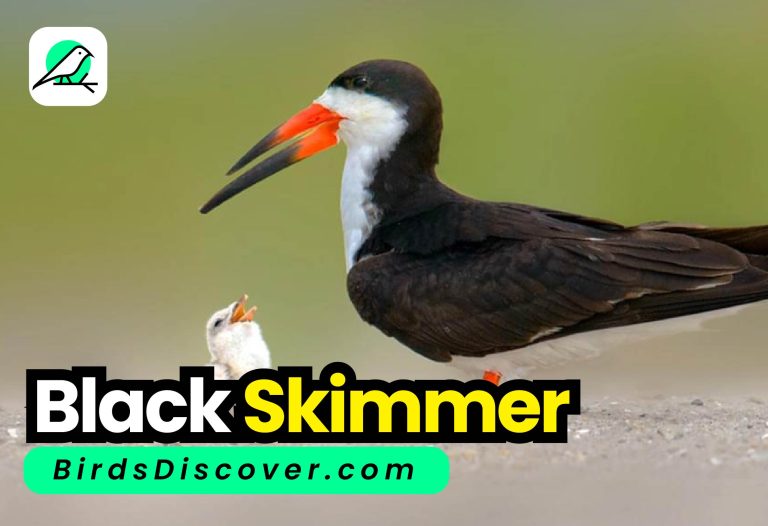30 BIRDS WITH LONG LEGS Identification, Pictures and Sounds

BIRDS WITH LONG LEGS
Long-legged birds, characterized by their notably elongated legs, are often found in a variety of wetland and coastal environments. These adaptations enable them to wade through shallow waters with ease, making them adept at foraging for food such as fish, insects, and crustaceans. Species like the heron, egret, and stilt are prime examples, each utilizing their long legs for different ecological roles. Herons, with their slender legs, are skilled hunters that use stealth and patience to catch prey. Egrets, distinguished by their graceful plumage and long legs, often hunt in shallower waters and are known for their striking white feathers. Stilts, with their exceptionally tall legs, are excellent at foraging in mudflats and shallow pools. The long-legged adaptations of these birds are crucial for their survival, allowing them to access food resources that might be out of reach for other species. Their elegant, often striking appearance adds to their charm, making them a fascinating subject for birdwatchers and naturalists alike.
Why are the legs of birds so long?
- Access to Food: Long legs allow birds to wade through shallow water and mud, enabling them to reach food sources like fish, insects, and crustaceans that are inaccessible to birds with shorter legs.
- Enhanced Foraging: By elevating their bodies above the water or mud, long-legged birds can better spot and catch prey from a higher vantage point, improving their foraging efficiency.
- Adaptation to Habitats: Long legs are particularly advantageous in wetlands, estuaries, and coastal areas where varying water depths and muddy conditions are common. This adaptation allows birds to navigate these environments more effectively.
- Efficient Movement: Long legs facilitate movement through different substrates, whether it’s wading through mud or walking in shallow water, helping birds to travel and forage across diverse terrains.
- Temperature Regulation: In some cases, longer legs can aid in temperature regulation by allowing birds to stand in cooler water or move through cooler areas, which can be beneficial in hot climates.
WOOD STORK
- Habitat: Found in wetlands, swamps, and marshes across the southeastern U.S., Central America, and parts of South America.
- Leg Length: Long legs are adapted for wading through shallow water and mud, essential for its foraging behavior.
- Feeding: Uses its long legs to slowly walk through water, probing with its large bill for fish, frogs, and aquatic invertebrates.
- Balance: The length of the legs helps maintain balance and stability while wading and feeding in varying water depths.
- Nesting: Long legs support efficient movement between feeding and nesting sites, aiding in the overall survival and reproductive success.
- Wingspan: Reaches up to 6.5 feet, complementing its long legs for balanced flight and maneuvering in its wetland habitat.

WOOD STORK, Sound
Scientific Classification
| Category | Details |
|---|---|
| Kingdom | Animalia |
| Phylum | Chordata |
| Class | Aves |
| Order | Ciconiiformes (storks), Charadriiformes (plovers and stilts), Pelecaniformes (herons, egrets) |
| Family | Various, depending on the specific bird (e.g., Ciconiidae for storks, Recurvirostridae for stilts) |
| Genus | Varies (e.g., Mycteria for wood storks, Himantopus for stilts) |
| Species | Varies (e.g., Mycteria americana for wood stork, Himantopus himantopus for black-winged stilt) |
SOUTHERN CASSOWARY
- Scientific Classification:
- Kingdom: Animalia
- Phylum: Chordata
- Class: Aves
- Order: Palaeognathae
- Family: Casuariidae
- Genus: Casuarius
- Species: Casuarius casuarius
- Habitat: Native to tropical rainforests of northern Australia, New Guinea, and nearby islands. Prefers dense, lowland forests and swamps.
- Leg Length: Features long, powerful legs with three-toed feet, adapted for running at high speeds and navigating dense underbrush.
- Feeding: Omnivorous diet including fruits, seeds, insects, small vertebrates, and fungi. Forages on the forest floor using its long legs to move through thick vegetation.
- Physical Characteristics:
- Height: Can stand up to 6 feet tall.
- Weight: Males up to 130 pounds, females slightly heavier.
- Coloration: Black plumage with bright blue and red skin on the neck and a distinctive casque (helmet-like structure) on its head.
- Behavior: Solitary and territorial, using its strong legs for running and powerful kicks for defense. Can run up to 30 miles per hour and deliver dangerous kicks when threatened.
- Conservation Status: Listed as Vulnerable due to habitat loss and hunting. Conservation efforts are in place to protect their natural habitat and reduce human-wildlife conflict.
- Unique Features: The southern cassowary’s long legs, combined with its casque, make it a distinctive and formidable presence in its rainforest habitat.

SOUTHERN CASSOWARY, Sound
Scientific Classification
| Category | Details |
|---|---|
| Kingdom | Animalia |
| Phylum | Chordata |
| Class | Aves |
| Order | Varies by family and species (e.g., Ciconiiformes, Charadriiformes, Pelecaniformes) |
| Family | – Ciconiidae (storks) |
| – Recurvirostridae (stilts and avocets) | |
| – Ardeidae (herons and egrets) | |
| – Rostratulidae (painted-snipe) | |
| Genus | Varies by species (e.g., Mycteria for storks, Himantopus for stilts, Ardea for herons) |
| Species | Varies widely (e.g., Mycteria americana for wood stork, Himantopus himantopus for black-winged stilt, Ardea alba for great egret) |
JABIRU
The jabiru (Jabiru mycteria) is a strikingly large stork native to the wetlands of Central and South America, extending from Mexico to Argentina. This impressive bird stands up to 5 feet tall with a wingspan reaching 8.5 feet, making it one of the largest storks in the world. It is distinguished by its predominantly white plumage, black wingtips, and a distinctive red and black head, complemented by a robust, slightly curved black bill. The jabiru inhabits tropical and subtropical wetlands, including swamps, marshes, and riverbanks, where it primarily feeds on fish, amphibians, and small reptiles. Its feeding strategy involves using its long, stout bill to probe in shallow waters. Known for its impressive soaring flight and large nests, the jabiru often builds its nests high in tall trees or on man-made structures, sometimes in large colonies. Despite facing some threats from habitat loss, the jabiru is generally classified as a species of Least Concern, reflecting its adaptability and stable population across its range.

Scientific Classification
| Category | Details |
|---|---|
| Kingdom | Animalia |
| Phylum | Chordata |
| Class | Aves |
| Order | Varies by family and species |
| Family | – Ciconiidae (storks) |
| – Recurvirostridae (stilts and avocets) | |
| – Ardeidae (herons and egrets) | |
| – Rostratulidae (painted-snipe) | |
| Genus | Varies by species (e.g., Mycteria for storks, Himantopus for stilts, Ardea for herons) |
| Species | Varies widely (e.g., Mycteria americana for wood stork, Himantopus himantopus for black-winged stilt, Ardea alba for great egret) |
GRAY HERON
The gray heron (Ardea cinerea) is a widely recognized wading bird found throughout Europe, Asia, and parts of Africa. Characterized by its tall, slender body and long legs, this heron stands about 3.3 to 4.3 feet tall with a wingspan ranging from 5.9 to 6.6 feet. Its plumage is predominantly gray with a white head and neck, complemented by black streaks and a distinctive crest that gives it an elegant appearance. The gray heron primarily inhabits freshwater and coastal wetlands, including rivers, lakes, and marshes, where it feeds on a diet of fish, amphibians, and small mammals. Known for its patient hunting style, it often stands still in shallow water, waiting to strike at passing prey with its sharp, dagger-like bill. The gray heron builds large nests in tall trees or reeds, where it lays several eggs, and it is a common sight in both urban parks and natural reserves. Its adaptability to various environments and striking appearance make it a notable presence in its rangeGRAY HERON Biography,Sound

GRAY HERON, Sound
Scientific Classification
| Category | Details |
|---|---|
| Kingdom | Animalia |
| Phylum | Chordata |
| Class | Aves |
| Order | Varies by family and species |
| Family | – Ciconiidae (storks) |
| – Recurvirostridae (stilts and avocets) | |
| – Ardeidae (herons and egrets) | |
| – Rostratulidae (painted-snipe) | |
| Genus | Varies by species (e.g., Mycteria for storks, Himantopus for stilts, Ardea for herons) |
| Species | Varies widely (e.g., Mycteria americana for wood stork, Himantopus himantopus for black-winged stilt, Ardea alba for great egret) |
GREAT EGRET
The great egret (Ardea alba) is a majestic wading bird renowned for its striking all-white plumage and elegant stature. Standing up to 4.3 feet tall with a wingspan that can reach nearly 6.6 feet, this heron-like bird is often found in freshwater and saltwater wetlands, including marshes, rivers, and estuaries. The great egret’s long, slender neck and legs, combined with its sharp, yellow bill, make it well-suited for stalking prey in shallow water. Its diet primarily consists of fish, amphibians, and small reptiles, which it catches with a swift, precise strike of its bill. During the breeding season, the great egret displays long, lacy plumes known as aigrettes, which are used in courtship displays and were historically prized in the millinery trade. Nests are typically built in trees or shrubs, where the birds lay several eggs. Its graceful appearance and striking white feathers make the great egret a symbol of beauty and tranquility in many cultures.
GREAT EGRET, Sound
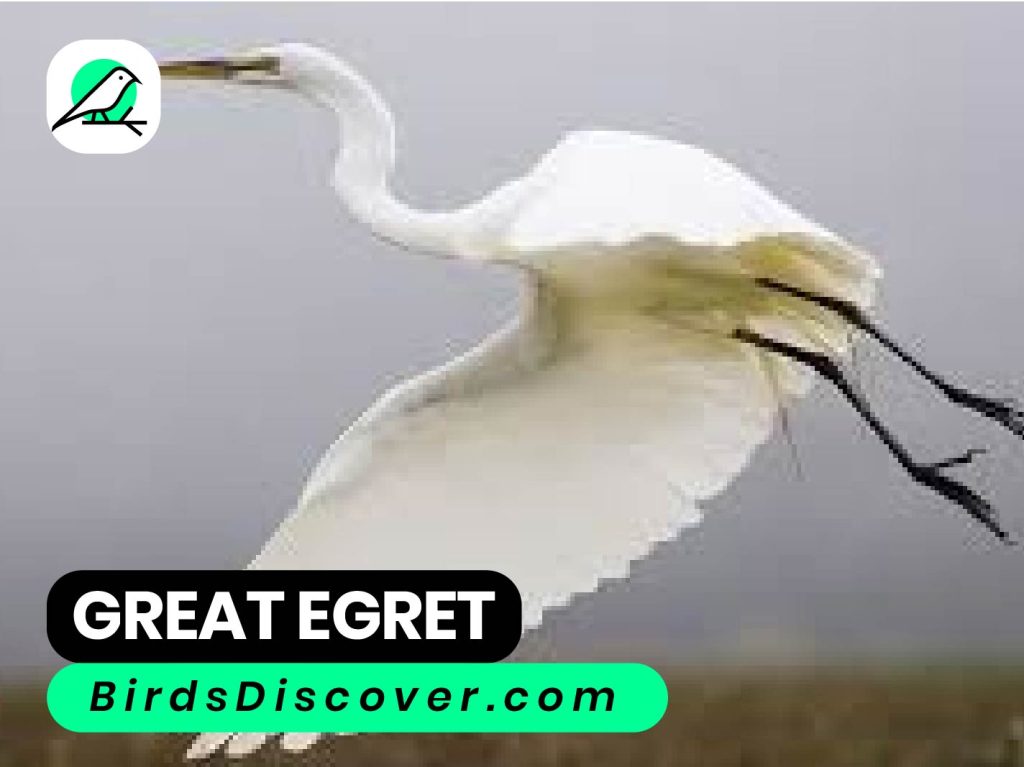
Scientific Classification
| Category | Details |
|---|---|
| Kingdom | Animalia |
| Phylum | Chordata |
| Class | Aves |
| Order | Varies by family and species |
| Family | – Ciconiidae (storks) |
| – Recurvirostridae (stilts and avocets) | |
| – Ardeidae (herons and egrets) | |
| – Rostratulidae (painted-snipe) | |
| Genus | Varies by species (e.g., Mycteria for storks, Himantopus for stilts, Ardea for herons) |
| Species | Varies widely (e.g., Mycteria americana for wood stork, Himantopus himantopus for black-winged stilt, Ardea alba for great egret) |
OSTRICH
The ostrich (Struthio camelus) is the world’s largest and heaviest bird, native to the savannas and open woodlands of Africa. Standing up to 9 feet tall and weighing between 220 to 330 pounds, it is easily recognized by its long, powerful legs, large eyes, and distinctive black and white plumage in males, with females sporting a more subdued brown and gray. The ostrich’s long legs enable it to run at speeds of up to 45 miles per hour, making it the fastest bird on land, which is crucial for escaping predators. Although it cannot fly, its strong legs are also adapted for powerful kicks, which can be a formidable defense. The ostrich is an omnivorous feeder, consuming a diet of plants, seeds, insects, and small animals. Its large eyes and keen vision help it detect predators from afar. Ostriches are known for their large nests, where several females may lay eggs that are incubated collectively. Their unique adaptations and impressive size make the ostrich a fascinating and iconic species of the African landscape.
OSTRICH, Sound

Scientific Classification
| Category | Details |
|---|---|
| Kingdom | Animalia |
| Phylum | Chordata |
| Class | Aves |
| Order | Varies by family and species |
| Family | – Ciconiidae (storks) |
| – Recurvirostridae (stilts and avocets) | |
| – Ardeidae (herons and egrets) | |
| – Rostratulidae (painted-snipe) | |
| Genus | Varies by species (e.g., Mycteria for storks, Himantopus for stilts, Ardea for herons) |
| Species | Varies widely (e.g., Mycteria americana for wood stork, Himantopus himantopus for black-winged stilt, Ardea alba for great egret) |
SNOWY EGRET
- Scientific Classification:
- Kingdom: Animalia
- Phylum: Chordata
- Class: Aves
- Order: Pelecaniformes
- Family: Ardeidae
- Genus: Egretta
- Species: Egretta thula
- Physical Characteristics:
- Size: About 22 to 26 inches tall with a wingspan of 39 to 41 inches.
- Plumage: Pure white feathers with black legs and a yellow bill.
- Breeding Plumage: Displays long, elegant plumes on the back and neck during the breeding season.
- Habitat:
- Range: Found throughout the Americas, from the southeastern United States to Argentina.
- Preferred Environments: Coastal lagoons, marshes, and mangrove swamps, often near shallow waters.
- Feeding Behavior:
- Diet: Primarily feeds on fish, insects, and small crustaceans.
- Foraging Technique: Uses a stealthy approach and quick strikes with its bill to catch prey in shallow water.
- Breeding:
- Nesting: Builds nests in trees or shrubs, often in colonies with other wading birds.
- Reproduction: Lays 3 to 5 eggs, with both parents participating in incubation and chick rearing.
- Conservation Status:
- Current Status: Generally classified as Least Concern, though local populations may be affected by habitat loss and pollution.
- Unique Features:
- Appearance: The snowy egret’s striking white feathers and graceful movements make it a notable and elegant presence in its wetland habitat.
SNOWY EGRET, Sound

Scientific Classification
| Category | Details |
|---|---|
| Kingdom | Animalia |
| Phylum | Chordata |
| Class | Aves |
| Order | Varies by family and species |
| Family | – Ciconiidae (storks) |
| – Recurvirostridae (stilts and avocets) | |
| – Ardeidae (herons and egrets) | |
| – Rostratulidae (painted-snipe) | |
| Genus | Varies by species (e.g., Mycteria for storks, Himantopus for stilts, Ardea for herons) |
| Species | Varies widely (e.g., Mycteria americana for wood stork, Himantopus himantopus for black-winged stilt, Ardea alba for great egret) |
AMERICAN FLAMINGO
The American flamingo (Phoenicopterus ruber) is a striking and iconic bird known for its vibrant pink plumage and long, slender legs. Native to the Caribbean, parts of Central and South America, and occasionally seen in the southeastern United States, this flamingo thrives in shallow, saline or alkaline lakes, lagoons, and mudflats. Standing about 3.3 to 4.6 feet tall with a wingspan of up to 5.1 feet, the American flamingo’s bright feathers range from soft pink to deep red, particularly on its wings and neck. It employs a specialized, downward-curved beak to filter-feed on algae, small crustaceans, and aquatic invertebrates. Breeding involves constructing large, mud-cone nests in shallow water, where both parents incubate the eggs and care for the young. Although generally classified as Least Concern, its populations can be affected by habitat loss and pollution. The American flamingo’s striking appearance and unique feeding habits make it a fascinating and visually captivating species.
Points
- Scientific Classification:
- Kingdom: Animalia
- Phylum: Chordata
- Class: Aves
- Order: Phoenicopteriformes
- Family: Phoenicopteridae
- Genus: Phoenicopterus
- Species: Phoenicopterus ruber
- Habitat:
- Range: Caribbean, Central and South America, southeastern United States
- Preferred Environments: Shallow, saline or alkaline lakes, lagoons, mudflats
- Physical Characteristics:
- Size: 3.3 to 4.6 feet tall, wingspan of 4.6 to 5.1 feet
- Coloration: Pink plumage with red and orange hues
- Beak: Downward-curved, specialized for filter-feeding
- Feeding Behavior:
- Diet: Algae, small crustaceans, aquatic invertebrates
- Feeding Technique: Filter-feeding with specialized beak
- Breeding:
- Nesting: Cone-shaped mud nests in shallow water, often in colonies
- Reproduction: 1 to 2 eggs, incubated and cared for by both parents
- Conservation Status:
- Current Status: Least Concern, with some local threats from habitat loss and pollution
- Unique Features:
- Appearance: Bright pink feathers and long legs make it visually striking and recognizable.
AMERICAN FLAMINGO, Sound

Scientific Classification
| Category | Details |
|---|---|
| Kingdom | Animalia |
| Phylum | Chordata |
| Class | Aves |
| Order | Varies by family and species |
| Family | – Ciconiidae (storks) |
| – Recurvirostridae (stilts and avocets) | |
| – Ardeidae (herons and egrets) | |
| – Rostratulidae (painted-snipe) | |
| Genus | Varies by species (e.g., Mycteria for storks, Himantopus for stilts, Ardea for herons) |
| Species | Varies widely (e.g., Mycteria americana for wood stork, Himantopus himantopus for black-winged stilt, Ardea alba for great egret) |
CATTLE EGRET
The cattle egret (Bubulcus ibis) is a distinctive wading bird easily recognized by its striking white plumage and yellowish-buff breeding feathers. Originally native to Africa, it has expanded its range to include parts of Europe, Asia, and the Americas. This medium-sized egret stands about 18 to 22 inches tall with a wingspan of 32 to 38 inches. Often found in fields and pastures, the cattle egret is known for its symbiotic relationship with large herbivores, such as cattle and buffalo, which stir up insects as they graze. The cattle egret takes advantage of this by feeding on the insects and parasites that are disturbed by the animals’ movements. During the breeding season, the bird’s plumage becomes more colorful, with striking buff and orange hues on its head, neck, and back. It nests in colonies in trees or shrubs, where it lays 3 to 5 eggs. Adaptable and widespread, the cattle egret is a familiar and beneficial presence in agricultural landscapes.
CATTLE EGRET, Sound

Scientific Classification
| Category | Details |
|---|---|
| Kingdom | Animalia |
| Phylum | Chordata |
| Class | Aves |
| Order | Varies by family and species |
| Family | – Ciconiidae (storks) |
| – Recurvirostridae (stilts and avocets) | |
| – Ardeidae (herons and egrets) | |
| – Rostratulidae (painted-snipe) | |
| Genus | Varies by species (e.g., Mycteria for storks, Himantopus for stilts, Ardea for herons) |
| Species | Varies widely (e.g., Mycteria americana for wood stork, Himantopus himantopus for black-winged stilt, Ardea alba for great egret) |
AMERICAN BITTERN
The American bittern (Botaurus lentiginosus) is a secretive and elusive wader native to North America, found primarily in wetlands, marshes, and dense reed beds. This medium-sized heron, standing around 24 to 28 inches tall with a wingspan of 39 to 42 inches, is characterized by its cryptic plumage, which features a mottled brown and beige pattern that provides excellent camouflage among the reeds. The American bittern’s slender body and long neck allow it to blend seamlessly into its surroundings as it stalks its prey. It primarily feeds on fish, amphibians, and insects, using its long, sharp bill to capture prey in shallow water. During breeding season, the male’s distinctive, booming call, often described as a “pump-er-lunk,” resonates through the marshes as part of its courtship display. Nesting typically occurs in dense vegetation, where the bittern lays 3 to 5 eggs. Despite its elusive nature, the American bittern is an important indicator species for wetland health and biodiversity.
AMERICAN BITTERN, Sound

GREEN HERON
The green heron (Butorides virescens) is a small and striking wading bird found throughout North and Central America, particularly in wetlands, ponds, and mangrove swamps. Standing around 16 to 18 inches tall with a wingspan of 25 to 26 inches, it is noted for its vibrant plumage, which features a rich greenish-blue back, chestnut-colored underparts, and a distinctive orange or yellowish legs and bill. The green heron is known for its stealthy hunting techniques, often seen standing still or slowly moving along the water’s edge as it scans for fish, insects, and amphibians. It employs a unique strategy known as “bait fishing,” where it uses small objects like bread or insects as lures to attract prey. During the breeding season, green herons build nests in trees or shrubs close to water, laying 3 to 5 eggs. Its adaptability and distinctive behavior make it a fascinating species in its wetland habitat.
GREEN HERON, Sound

Scientific Classification
| Category | Details |
|---|---|
| Kingdom | Animalia |
| Phylum | Chordata |
| Class | Aves |
| Order | Varies by family and species |
| Family | – Ciconiidae (storks) |
| – Recurvirostridae (stilts and avocets) | |
| – Ardeidae (herons and egrets) | |
| – Rostratulidae (painted-snipe) | |
| Genus | Varies by species (e.g., Mycteria for storks, Himantopus for stilts, Ardea for herons) |
| Species | Varies widely (e.g., Mycteria americana for wood stork, Himantopus himantopus for black-winged stilt, Ardea alba for great egret) |
TRICOLORED HERON
The tricolored heron (Egretta tricolor) is a striking wading bird found along the southeastern coast of the United States, from the Carolinas to Texas, as well as in parts of Central America and the northern part of South America. This medium-sized heron, measuring about 24 to 30 inches in height with a wingspan of 39 to 41 inches, is renowned for its distinctive plumage. It has a slate-blue body with a chestnut-colored neck and a white belly, complemented by long, slender legs and a sharp, pointed bill. The tricolored heron is often seen in shallow coastal and freshwater habitats, where it uses its graceful movements and keen eyesight to hunt for fish, crustaceans, and insects. During the breeding season, it performs elaborate courtship displays and builds nests in trees or mangroves, where it lays 3 to 4 eggs. Its elegant appearance and specialized hunting skills make it a notable resident of its wetland environment.
TRICOLORED HERON, Sound

Scientific Classification
| Category | Details |
|---|---|
| Kingdom | Animalia |
| Phylum | Chordata |
| Class | Aves |
| Order | Varies by family and species |
| Family | – Ciconiidae (storks) |
| – Recurvirostridae (stilts and avocets) | |
| – Ardeidae (herons and egrets) | |
| – Rostratulidae (painted-snipe) | |
| Genus | Varies by species (e.g., Mycteria for storks, Himantopus for stilts, Ardea for herons) |
| Species | Varies widely (e.g., Mycteria americana for wood stork, Himantopus himantopus for black-winged stilt, Ardea alba for great egret) |
PURPLE HERON
The purple heron (Ardea purpurea) is a striking wading bird native to Europe, Africa, and parts of Asia. Slightly smaller than its relatives, it stands about 30 to 36 inches tall with a wingspan of 50 to 55 inches. The purple heron is known for its distinctive and vibrant plumage: its body is a rich mix of purples, reds, and browns, with a striking dark purple neck and a contrasting white belly. This heron inhabits a variety of wetland environments, including marshes, swamps, and riverbanks, where it can be seen stalking prey in shallow water. Its diet primarily consists of fish, amphibians, and small reptiles, which it captures with a swift, spear-like bill. During the breeding season, purple herons build large, often solitary nests in reeds or trees, laying 3 to 5 eggs. Its vibrant colors and elusive behavior make it a captivating species within its wetland habitat.
PURPLE HERON, Sound

LIMPKIN
The limpkim (Aramus guarauna) is a unique wading bird native to the wetlands of the southeastern United States, Central America, and northern South America. Standing about 24 to 30 inches tall with a wingspan of 40 to 44 inches, the limpkim is distinguished by its long legs, slender neck, and distinctive brown and white striped plumage. Its most notable feature is its long, curved bill, which is perfectly adapted for extracting apple snails from their shells—a primary food source. The limpkim’s habitat includes swamps, marshes, and mangrove forests, where it can often be seen moving quietly through dense vegetation while foraging. Its call, a series of haunting, trumpet-like notes, is a distinctive sound in its wetland habitat. During the breeding season, the limpkim builds nests in dense vegetation near water, where it lays 3 to 5 eggs. Its specialized feeding habits and striking appearance make it an intriguing species within its ecosystem.
LIMPKIN, Sound
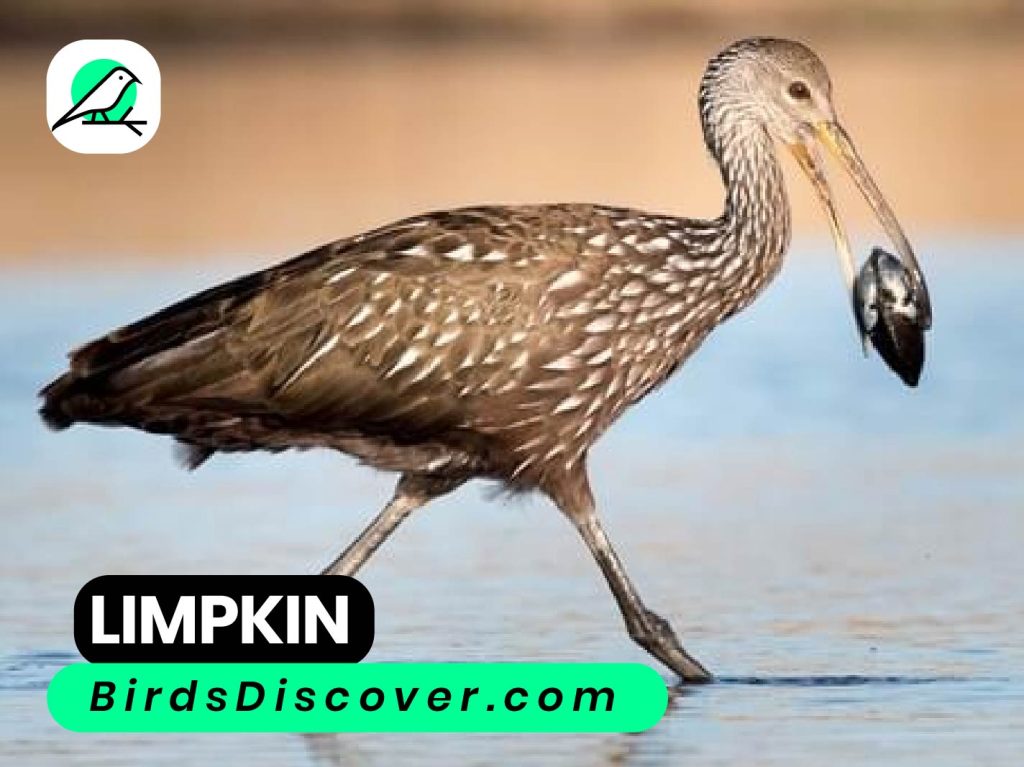
Scientific Classification
| Category | Details |
|---|---|
| Kingdom | Animalia |
| Phylum | Chordata |
| Class | Aves |
| Order | Varies by family and species |
| Family | – Ciconiidae (storks) |
| – Recurvirostridae (stilts and avocets) | |
| – Ardeidae (herons and egrets) | |
| – Rostratulidae (painted-snipe) | |
| Genus | Varies by species (e.g., Mycteria for storks, Himantopus for stilts, Ardea for herons) |
| Species | Varies widely (e.g., Mycteria americana for wood stork, Himantopus himantopus for black-winged stilt, Ardea alba for great egret) |
SCARLET IBIS
The scarlet ibis (Eudocimus ruber) is a vibrant and striking wading bird native to the tropical regions of Central and South America, including countries like Venezuela, Colombia, and Brazil. Distinguished by its brilliant red plumage, which comes from its diet rich in carotenoids, this medium-sized bird measures about 22 to 26 inches in length with a wingspan of around 36 to 39 inches. The scarlet ibis is commonly found in mangroves, estuaries, and wetlands, where it forages for its diet of crabs, mollusks, and small fish. Its long, slender bill is well-adapted for probing mud and shallow water for prey. During the breeding season, scarlet ibises build large, communal nests in trees or bushes near water, laying 2 to 4 eggs. Their vivid coloration and distinctive feeding habits make them a striking and important species in their tropical wetland habitats.

Scientific Classification
| Category | Details |
|---|---|
| Kingdom | Animalia |
| Phylum | Chordata |
| Class | Aves |
| Order | Varies by family and species |
| Family | – Ciconiidae (storks) |
| – Recurvirostridae (stilts and avocets) | |
| – Ardeidae (herons and egrets) | |
| – Rostratulidae (painted-snipe) | |
| Genus | Varies by species (e.g., Mycteria for storks, Himantopus for stilts, Ardea for herons) |
| Species | Varies widely (e.g., Mycteria americana for wood stork, Himantopus himantopus for black-winged stilt, Ardea alba for great egret) |
PURPLE GALLINULE
The purple gallinule (Porphyrio martinicus) is a striking wading bird native to the swamps and marshes of the southeastern United States, Central America, and the northern part of South America. Recognizable by its vivid plumage, the purple gallinule boasts a brilliant combination of purple, blue, and green feathers, with bright yellow legs and a red and yellow bill. This medium-sized bird, standing about 10 to 14 inches tall with a wingspan of approximately 18 to 22 inches, is known for its remarkable agility in dense vegetation. The purple gallinule forages for a diet of seeds, insects, and aquatic plants, using its long toes to walk on floating vegetation and navigate through marshy terrain. It nests in dense reeds or bushes, building a platform of reeds where it lays 6 to 8 eggs. The purple gallinule’s vibrant colors and unique adaptations make it a distinctive and captivating species in its wetland habitat.
PURPLE GALLINULE, Sound

REDDISH EGRET
Here’s a step-by-step overview of the reddish egret:
Scientific Classification:
- Kingdom: Animalia
- Phylum: Chordata
- Class: Aves
- Order: Pelecaniformes
- Family: Ardeidae
- Genus: Egretta
- Species: Egretta rufescens
Physical Characteristics:
- Size: About 26 to 32 inches tall with a wingspan of 39 to 41 inches.
- Coloration:
- Breeding Plumage: Distinctive reddish-brown feathers with a darker head and neck.
- Non-Breeding Plumage: Lighter, more mottled brown or grayish with a pale head.
- Bill: Long and slender, slightly curved, suited for catching fish.
Habitat:
- Range: Coastal regions of the southeastern United States, Mexico, Central America, and northern South America.
- Preferred Environments: Shallow coastal lagoons, salt marshes, mangroves, and estuaries.
Feeding Behavior:
- Diet: Primarily feeds on fish, but also consumes crustaceans, amphibians, and insects.
- Foraging Technique: Uses rapid, erratic movements to stir up fish and catch prey with its bill.
Breeding:
- Nesting: Builds nests in trees, shrubs, or on the ground in dense vegetation near water.
- Reproduction: Lays 3 to 4 eggs, which are incubated by both parents. The young are cared for by both adults.
Behavior:
- Movement: Known for its energetic and dynamic hunting style, often seen running and leaping through shallow water.
- Social Structure: Can be solitary or found in small, loose groups, particularly during feeding.
Conservation Status:
- Current Status: Classified as Least Concern, though it may face threats from habitat loss and environmental changes. Populations are generally stable but localized.
Unique Features:
- Appearance: The reddish egret’s dramatic coloration and energetic hunting style make it a visually striking and distinctive species in its habitat.
REDDISH EGRET, Sound
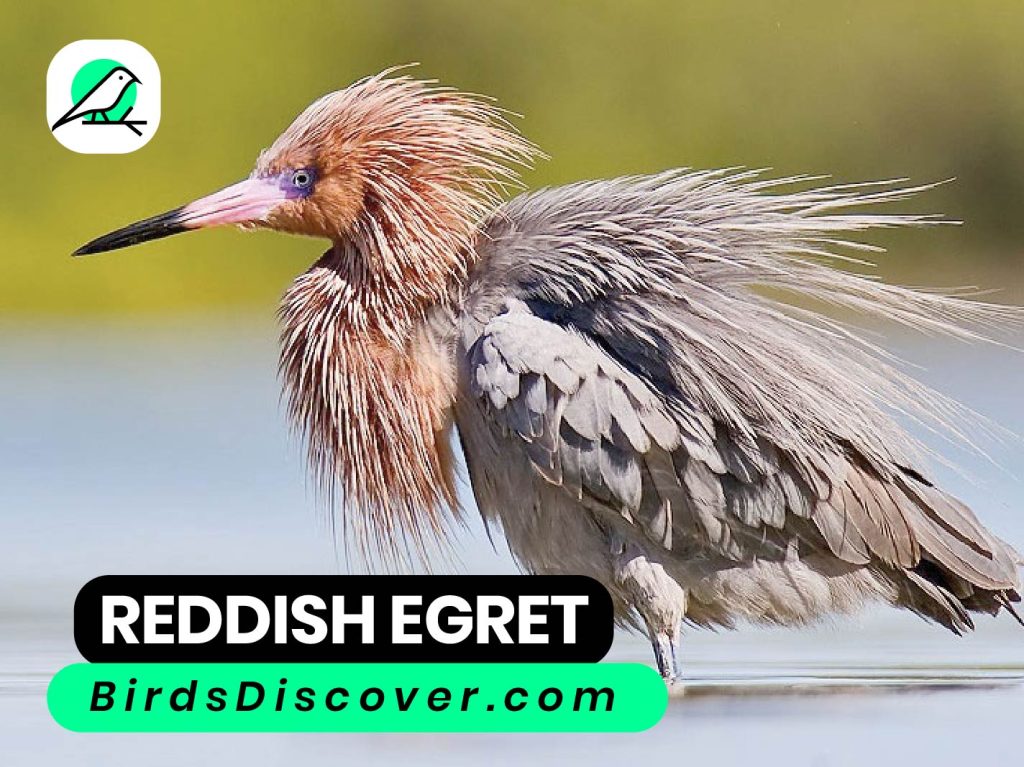
SANDHILL CRANE
The sandhill crane (Antigone canadensis) is a tall and graceful wading bird found across North America, from the wetlands of Canada and the northern United States to the southern parts of the U.S. and Mexico. Standing about 4 to 5 feet tall with a wingspan of 6 to 7 feet, the sandhill crane is easily recognizable by its long legs, neck, and distinctive gray plumage, which can range from light gray to a more rusty hue during the breeding season. Known for its impressive and elaborate courtship dances, which involve leaping and bowing, this crane is often seen in open wetlands, grasslands, and agricultural fields. It primarily feeds on a diet of grains, insects, and small aquatic animals. During migration, sandhill cranes form large, noisy flocks and are known for their distinctive trumpeting calls. They build nests in marshes or wet meadows, laying 1 to 2 eggs, which both parents incubate. Their adaptability and striking presence make them a notable species in North American wetlands.
SANDHILL CRANE, Sound

Scientific Classification
| Category | Details |
|---|---|
| Kingdom | Animalia |
| Phylum | Chordata |
| Class | Aves |
| Order | Varies by family and species |
| Family | – Ciconiidae (storks) |
| – Recurvirostridae (stilts and avocets) | |
| – Ardeidae (herons and egrets) | |
| – Rostratulidae (painted-snipe) | |
| Genus | Varies by species (e.g., Mycteria for storks, Himantopus for stilts, Ardea for herons) |
| Species | Varies widely (e.g., Mycteria americana for wood stork, Himantopus himantopus for black-winged stilt, Ardea alba for great egret) |
NORTHERN JACANA
The northern jacana (Jacana spinosa) is a striking wader native to the wetlands and swampy areas of Central and northern South America. Characterized by its vibrant plumage, this medium-sized bird measures about 10 to 12 inches in length and is noted for its long, slender legs and bright yellow body with dark brown wings and head. One of its most distinctive features is its impressive, elongated toes, which enable it to walk effortlessly on floating vegetation, such as water lilies and reeds. The northern jacana’s striking appearance and unique adaptations make it a remarkable species in its wetland habitat. This bird is also known for its fascinating breeding behavior; it exhibits a polyandrous mating system where a single female mates with multiple males. The female is responsible for defending her territory, while the males build nests and incubate the eggs. After hatching, the precocial chicks are capable of walking and foraging almost immediately. The northern jacana’s vibrant colors and intricate lifestyle highlight its adaptability and specialized niche within tropical wetland ecosystems.
NORTHERN JACANA, Sound

Willet
The willet (Tringa semipalmata) is a robust and distinctive shorebird commonly found along the coasts of North and Central America. Measuring approximately 14 to 16 inches in length with a wingspan of 26 to 29 inches, the willet is easily recognizable by its long legs, straight bill, and striking plumage. Its feathers are primarily grayish-brown with a subtle pattern of stripes and spots, and during flight, it reveals striking black-and-white wing patterns that are particularly noticeable. Willets are often seen in coastal habitats, such as sandy shores, mudflats, and estuaries, where they forage for a diet of insects, crustaceans, and small fish. They use a distinctive feeding technique, probing the mud with their bills to locate prey. During the breeding season, willets build their nests in grassy or sandy areas near the water, laying 3 to 4 eggs. Their adaptability to various coastal environments and unique appearance make them a notable species along North American shorelines
Willet, Sound
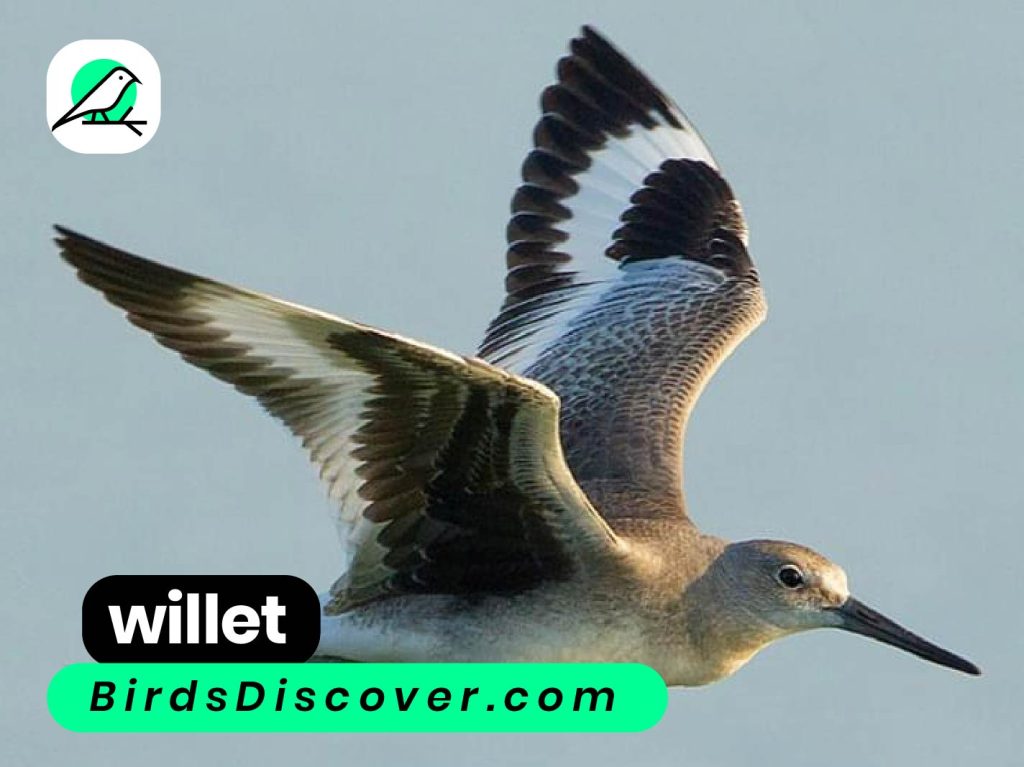
Scientific Classification
| Category | Details |
|---|---|
| Kingdom | Animalia |
| Phylum | Chordata |
| Class | Aves |
| Order | Varies by family and species |
| Family | – Ciconiidae (storks) |
| – Recurvirostridae (stilts and avocets) | |
| – Ardeidae (herons and egrets) | |
| – Rostratulidae (painted-snipe) | |
| Genus | Varies by species (e.g., Mycteria for storks, Himantopus for stilts, Ardea for herons) |
| Species | Varies widely (e.g., Mycteria americana for wood stork, Himantopus himantopus for black-winged stilt, Ardea alba for great egret) |
FAQS
1. What defines a long-legged bird?
Long-legged birds are species with disproportionately long legs relative to their bodies, which help them wade through shallow water and navigate marshy or muddy environments. These adaptations are ideal for foraging for food in wetlands and other aquatic habitats.
2. Why do long-legged birds have such long legs?
Long legs allow these birds to reach food in deeper water and to move easily through mud and marshes. The extended legs also aid in maintaining balance and stability while walking on floating vegetation or uneven surfaces.
3. What are some common examples of long-legged birds?
Common examples include the heron, egret, flamingo, stilt, and ibis. Each of these birds has adapted long legs for specific feeding and habitat requirements.
4. How do long-legged birds find food?
Long-legged birds use their long legs and bills to probe and sift through water and mud. They typically feed on fish, insects, crustaceans, and other small aquatic organisms. Their foraging techniques vary, including sweeping their bills through the water or using quick, precise movements to capture prey.
5. Are long-legged birds migratory?
Many long-legged birds are migratory, traveling long distances between breeding and wintering grounds. For example, some species of herons and egrets migrate between North and South America, while flamingos and stilts may move seasonally within their ranges to find suitable feeding and breeding conditions.


